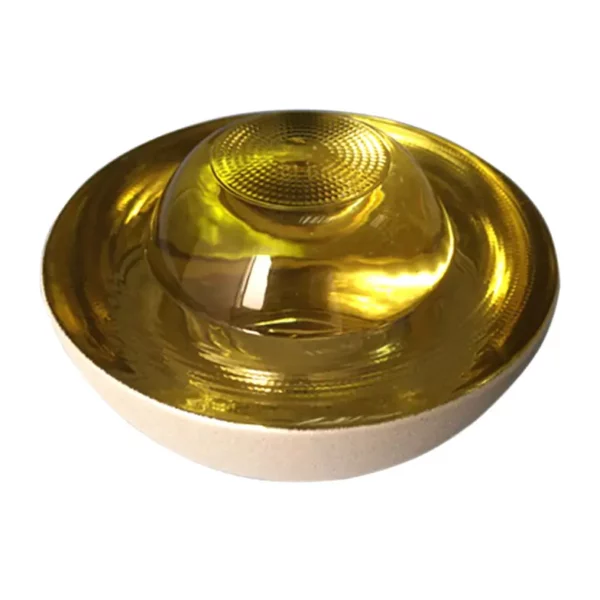How does Synchronized Cat Eyes technology differ from other visual sensing systems?
Without specific information about what “Synchronized Cat Eyes” technology refers to, it’s challenging to provide a detailed comparison with other visual sensing systems. However, I can provide a general overview of how visual sensing systems may differ from each other, and you can adapt this information to your specific context if you have more details about Synchronized Cat Eyes.
Visual sensing systems can vary in terms of their technology, sensors, and applications, and here are some common points of differentiation:
- Sensing Technology: Visual sensing systems can use different sensing technologies, such as cameras, LiDAR (Light Detection and Ranging), RADAR (Radio Detection and Ranging), or infrared sensors. The choice of technology impacts their capabilities and performance.
- Sensing Range: Some visual sensing systems have a limited sensing range, while others are capable of long-range detection. The range can affect their suitability for specific applications.
- Resolution: Resolution refers to the level of detail a sensor can capture. High-resolution sensors provide more detailed information, which can be crucial in certain applications.
- Environmental Conditions: Visual sensing systems can vary in their ability to operate in different environmental conditions, such as low-light conditions, rain, fog, or extreme temperatures.
- Cost: Different technologies come with different costs, which can impact the feasibility of using them in various applications.
- Data Processing: The way visual data is processed and interpreted can differ between systems, affecting their real-time performance and accuracy.
- Application Focus: Some visual sensing systems are designed with a specific application in mind, such as autonomous vehicles, robotics, or surveillance. The design may prioritize certain features for that application.
- Integration: Visual sensing systems can be integrated with other sensors and technologies to enhance their capabilities and provide a more comprehensive perception system.
To provide a more accurate comparison of “Synchronized Cat Eyes” technology with other visual sensing systems, Synchronized Cat Eyes you would need to have more information about its specific features, technology, and intended applications.
What industries or sectors could benefit the most from Synchronized Cat Eyes technology?
“Synchronized Cat Eyes” is not a widely recognized term or technology in my knowledge base, so I cannot provide specific information about its applications or potential benefits. However, I can provide a general overview of the types of industries and sectors that often benefit from advanced visual sensing and imaging technologies. If you have more information about “Synchronized Cat Eyes,” you can apply these insights to its potential applications in relevant industries:
- Automotive and Transportation: Visual sensing systems are crucial for autonomous vehicles, enhancing safety and enabling features like lane-keeping, collision avoidance, and parking assistance.
- Aerospace: In aviation and space exploration, advanced visual sensing systems are used for navigation, landing, and obstacle detection.
- Robotics: Visual sensing is essential for robots in various industries, including manufacturing, healthcare, and agriculture.
- Surveillance and Security: Visual sensors are used for monitoring and securing areas in public spaces, critical infrastructure, and residential properties.
- Medical Imaging: Advanced imaging technologies play a vital role in medical diagnostics, surgery, and patient monitoring.
- Manufacturing and Quality Control: Visual sensing is used in quality control processes to inspect products for defects and ensure they meet specifications.
- Entertainment and Gaming: Visual sensing technologies, such as gesture recognition and facial tracking, are used in entertainment and gaming applications.
- Augmented and Virtual Reality: Visual sensing enhances the immersive experiences in AR and VR applications.
- Environmental Monitoring: Visual sensing systems can monitor and analyze environmental conditions and changes for various purposes, such as weather forecasting and climate research.
- Construction and Architecture: Visual sensing aids in site surveying, 3D modeling, and progress monitoring in construction projects.
- Education and Training: Visual sensing technologies are used in educational settings for interactive learning and training.
- Retail and E-commerce: Visual sensing can improve customer experiences through features like cashier-less stores and augmented reality shopping.
- Agriculture: Visual sensors can be used for precision agriculture, optimizing crop management and resource usage.
- Sports and Recreation: Visual sensing is used in sports analysis, training, and enhancing the viewing experience.
- Energy and Utilities: Visual sensing helps monitor and maintain critical infrastructure, such as power grids and pipelines.
The applicability of visual sensing technologies depends on their specific features and capabilities. If you have more information about “Synchronized Cat Eyes” and its unique characteristics, it would be easier to determine the industries or sectors where it could provide the most significant benefits.

